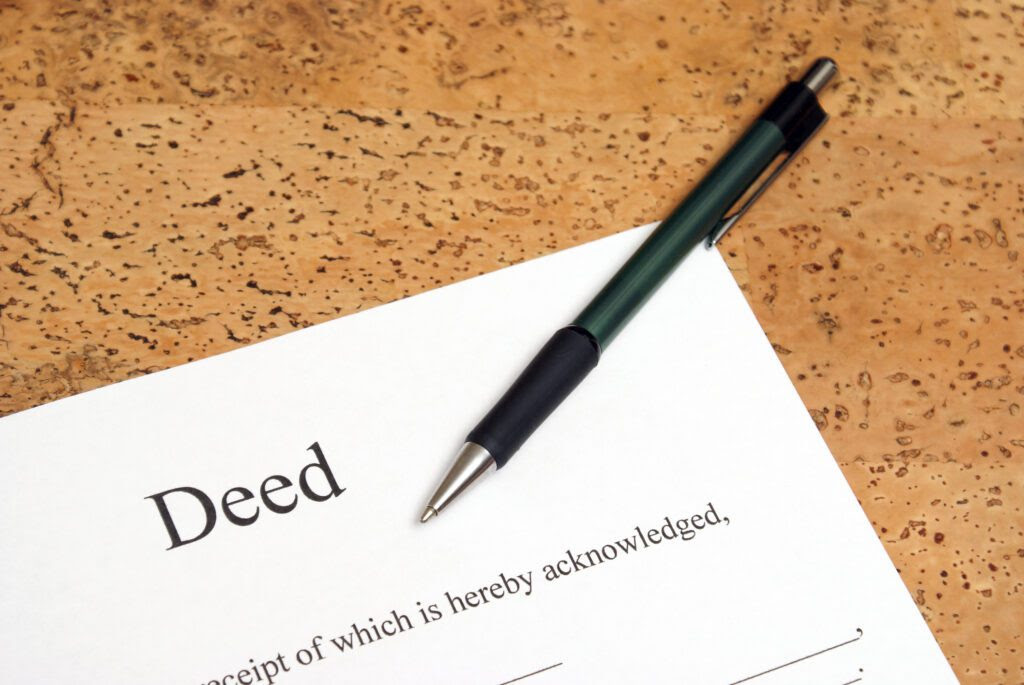Spanish translation of trust deeds
The Spanish translation of trust deeds is essential for protecting Spain-based assets and ensuring that they are dispersed in accordance with the owner’s intentions and requirements when it comes to legal documents regarding property and financial transactions. These documents, known as “instrumentos fiduciarios” or “instrumentos de fideicomiso” in the Spanish-speaking world, require accurate translation in order to ensure their validity and authenticity.

Trust Deed: What It Is, How It Works, Example Form
What It Is: A trust deed, also known as a declaration of trust or trust instrument, is a legal document that establishes a trust and outlines the terms and conditions under which the trust operates. It serves as a binding agreement between the settlor (the person who creates the trust) and the trustee (the person or entity responsible for managing the trust). The trust deed defines the roles and responsibilities of the trustee, the settlor, and the beneficiaries (the individuals or entities who benefit from the trust), and provides specific instructions for the management and distribution of assets held in the trust.
How It Works:
- Creation: The trust deed is created by the settlor, who may work with a legal professional to draft the document. It specifies the purpose of the trust, the names of the trustee and beneficiaries, and the assets to be placed in the trust.
- Trustee Responsibilities: The trust deed outlines the duties and responsibilities of the trustee. This includes managing the assets in the best interests of the beneficiaries, following the terms of the trust deed, and providing regular accounting and reporting to the beneficiaries.
- Asset Management: The trust deed may contain specific instructions on how the assets within the trust are to be managed, invested, and distributed. It may also include provisions regarding the powers and limitations of the trustee in making decisions related to the assets.
- Distribution: The trust deed specifies how and when the assets or income generated by the trust are to be distributed to the beneficiaries. This may be based on specific events, such as the beneficiaries reaching a certain age, or it may be at the discretion of the trustee.
- Termination: The trust deed may include provisions for the termination of the trust. This can occur upon the occurrence of a specific event (e.g., the death of the settlor) or after a set period of time. Upon termination, the remaining assets in the trust are distributed according to the terms of the trust deed.
Example Form: While the specific contents of a trust deed can vary depending on the type of trust and the settlor’s wishes, a typical trust deed form may include the following sections:
- Title: “Trust Deed” or “Declaration of Trust”
- Preamble: Introduction stating the intent to create a trust, the names of the settlor and trustee, and the date of execution.
- Definitions: Definitions of key terms used in the trust deed.
- Trust Property: Description of the assets to be held in trust.
- Purpose of the Trust: Statement of the trust’s purpose and objectives.
- Trustee Powers and Duties: Outline of the trustee’s responsibilities and authorities.
- Beneficiaries: Identification of the beneficiaries and any specific provisions related to their interests in the trust.
- Distribution of Trust Assets: Instructions on how and when trust assets are to be distributed to the beneficiaries.
- Termination of Trust: Conditions and procedures for the termination of the trust.
- Miscellaneous Provisions: Additional clauses such as indemnification, amendment procedures, and governing law.
- Execution: Signatures of the settlor and trustee, and any witnesses or notary public, as required.
It’s important to note that trust deeds are complex legal documents, and it is advisable to consult with a lawyer or legal professional when creating or interpreting a trust deed to ensure compliance with applicable laws and regulations.
SPANISH TRANSLATION OF TRUST DEEDS
Legal terminology in Spanish: Understanding the differences in the translation of trust instruments
The translation of trust instruments from English to Spanish requires not only an in-depth understanding of legal and financial jargon, but also an awareness of the full set of cultural and linguistic nuances that could have an impact on the interpretation of the document. Working with a qualified translator who is fluent in both languages and has experience translating legal documents is essential for ensuring that the translation accurately captures the meaning and purpose of the original document. Working with a qualified translator who is fluent in both languages and has experience translating legal documents is crucial.
Sworn translation: Ensuring validity in the translation of trust documents
Another essential part of translating trust instruments is making certain that the translation has been sworn or otherwise validated. A sworn translation is a translation that has been recognized as accurate and complete by a certified translator. This type of translation has been given the name “sworn.” This kind of translation is commonly required since it helps ensure that legal and official documents, like trust instruments and trust deeds, adhere to all applicable laws and may be legally enforced.
If you have been appointed to act as executor and/or trustee for the administration of Spanish assets, a Sworn Spanish translator should be able to offer a sworn translation that fits the legal criteria of the target nation. This is particularly important if you are administering assets in Spain.

When is the translation of a trust deed necessary?
A trust document or deed could need to be translated into Spanish, for instance, if either means the trustee or beneficiary is Spanish-speaking or if the assets are situated in a country that speaks the language. A Spanish translation can also be necessary if the trust deed or document needs to be used in court or for any other official or legal functions in a Spanish-speaking nation.
When an offshore document must be used in a Spanish-speaking nation or includes parties whose first language is Spanish, a Spanish translation may be necessary. For compliance or regulatory reasons, a firm or company based in the United States or the United Kingdom may be required to produce a Spanish translation of pertinent documents if it has offshore bank accounts, property or investments in a country that speaks Spanish.
A Spanish translation of pertinent documents may also be required if a Spanish-speaking person is participating in an offshore commercial transaction or has assets located abroad. This is to guarantee that the person fully understands the terms and circumstances of the transaction or the management of their assets. Generally, whenever a document, letter, declaration or agreement related to offshore activities involves parties or transactions with Spanish-speaking individuals or entities, a Spanish translation may be necessary.
The role of professional translators in trust instrument translation
Trust instruments are crucial legal papers that must be accurately and precisely translated in order by law for them to be lawful and enforceable. Understanding legal rules and common financial jargon in depth as well as cultural and language subtleties that could affect the interpretation of the document are necessary for translating trust instruments from English to Spanish.
Working with a qualified translator who is fluent in both languages and has expertise translating legal papers is crucial to guaranteeing that the translation faithfully captures the meaning of the original document. To ensure the contract, loan or trust instrument’s legal validity and enforceability, a sworn or certified translation is essential.
Contact us
I am a Sworn Spanish Translator with 20 years of experience in Legal Translation. I was appointed by the Spanish Ministry of Foreign Affairs in 2003 and I specialise in the translation of trust instruments.


Sworn / Legal English-Spanish Translator with 20 years of experience in legal translation. BA in Translation & Interpreting and Graduate Diploma in English Law. Specialising in trusts, contracts, company documents and civil litigation documents. Traductora jurada y jurídica de inglés 20 años de experiencia en la traducción jurídica. Licenciada en Traducción e Interpretación y Graduada en Derecho inglés. Especializada en trusts, contratos, documentos societarios y escritos y documentos para procesos civiles y mercantiles.
Spanish translation of trust deeds Read More »
